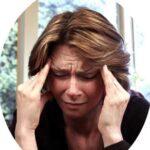 Researchers at Beth Israel Deaconess Medical Center, in Boston, Massachusetts, report patterns and reasons for its use.
Researchers at Beth Israel Deaconess Medical Center, in Boston, Massachusetts, report patterns and reasons for its use.
It’s not what you think.
First, the details.
- CAM use among 23,393 adults with and without self-reported migraines/severe headaches was recorded in a national survey.
And, the results.
- Adults with migraines/severe headaches used CAM significantly more frequently than those without (45% vs 34%).
- Mind-body therapies (eg, deep breathing exercises, meditation, yoga) were used most commonly.
- Most adults with migraines/severe headaches didn’t discuss CAM use with their healthcare provider.
- Nonetheless, those with migraines/severe headaches used CAM more often than those without because of their healthcare provider’s recommendation and because conventional treatments were perceived as ineffective or too costly.
- There was an association between CAM use among adults with migraines/severe headaches and anxiety, joint or low back pain, alcohol use, higher education, and living in the western USA.
- Only 5% of adults with migraines/severe headaches reported using CAM to specifically treat their migraines/severe headaches.
The bottom line?
The authors concluded, “CAM is used more often among adults with migraines/severe headaches than those without. However, few report using CAM to specifically treat migraines/severe headaches.”
So, migraineurs are more likely to use CAM, but not because it might help their migraine headaches. Very few migraineurs (5%) use CAM specifically to treat migraine headache.
8/31/11 20:48 JR